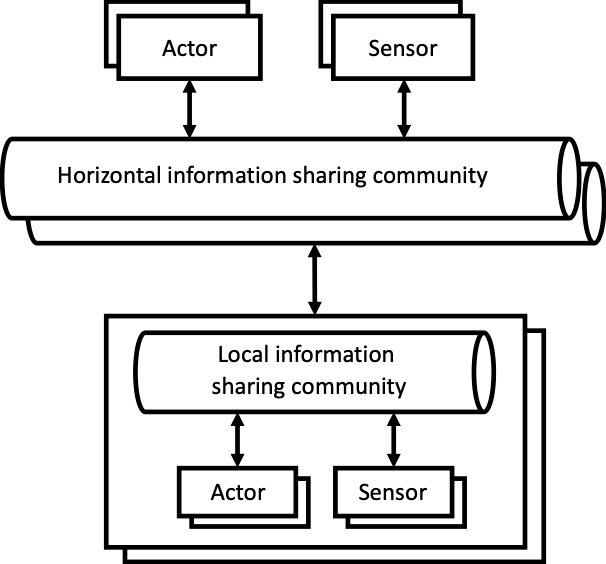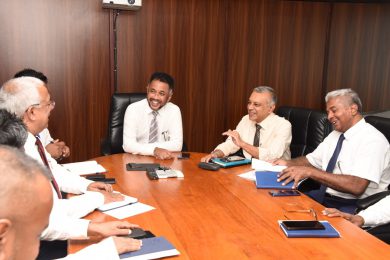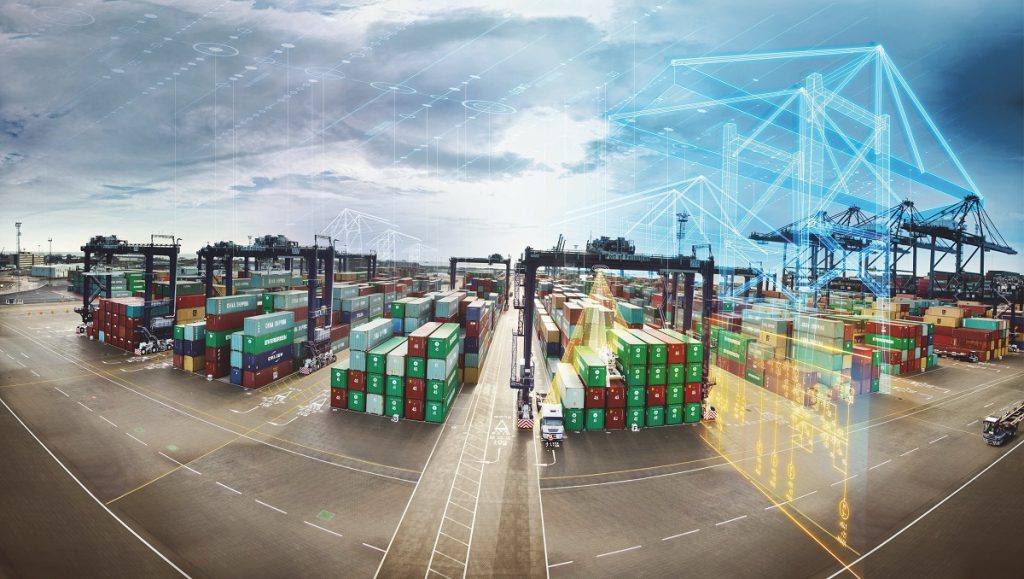Building upon the principle of standardisation in the physical world, standardisation and containerisation of the informational side of shipping can now produce efficiencies in information sharing and the effectiveness of decision making.
by Mikael Lind, RISE (Research institutes of Sweden), Hanane Becha, DCSA & UN/CEFACT, André Simha, MSC (Mediterranean Shipping Company SA), Francois Bottin, CMA CGM, and Steen Erik Larsen, A.P. Moller – Maersk
The standardisation of the physical shipping container brought positive value by reducing the costs for transporting goods, end-to-end. The digital era parallel is the homogeneity of message formats and service interfaces.
Building upon the principle of standardisation in the physical world, standardisation and containerisation of the informational side of shipping can now produce efficiencies in information sharing and the effectiveness of decision making.
Empowered by digital standards, information about the location of a container (a “smart” container), its contents, its carriers, and the expected and forthcoming operations on the container provides value to all concerned.
To do this effectively requires open standardised communication channels between the different partners along the transport chain to keep each stage fully informed of the progress of a shipment, and in particular when goods will reach their destination, as well as providing a foundation for efficient operations.
Using standard message formats and digital protocols for smart containerisation is now as important and can be considered as an equally vital parallel to the physical standardisation of the ISO container itself. The digital interface for standardised messages can then be seen as a parallel to the physical handling of containers, and finally, there are now data sharing services alongside the physical container services in the transport chain (c.f. table 1).

Just-in-time arrivals and departures, the port as a smart entity, up-to-date track-and-trace information, real time tracking and the monitoring of dry and reefer smart containers, eBills of Lading, and architectures for enabling the digital collaboration are all examples of contemporary initiatives aiming at efficient resource utilisation, energy-efficient maritime transport, enhanced predictability of movements and operations, as well as enhanced information transparency throughout the transport chain.
Standardised messaging
Several message formats have recently been developed to enable the different actors in the transport chain to share data and work together. Examples are standards for port call messaging (e.g. S-211), standards for the status of the goods (e.g. EPCIS), smart containers, and reporting formalities (e.g. IMO/FAL pursuing the work of aligning diverse standards through its referencing framework).
Standardised interfaces
Application Programming Interfaces (APIs) are the “glue” between the different digital services that enable integration. When standard APIs are available to the industry, stakeholders benefit from new capabilities for connecting and integrating data across the intermodal supply chain ecosystem.
Traditionally, APIs were developed from scratch for specific integrations and languages. Today however, APIs are increasingly used to integrate various turnkey services and data sources for the purpose of enriching or augmenting existing business processes and workflows. Time and money does not have to be spent on building a specific format for data exchanges, so API’s enable the building of better integration across many similar service providers and a speeding up of innovation since new versions can be delivered faster.
It is claimed that with APIs as the adhesive between multiple turnkey services and data sources, adding business process capabilities can become agile, cost-efficient plug-and-play exercises. APIs not only enable powerful new data services and applications, they simplify continuous adaptation to new business models. Diverse initiatives have been taken for standardised API’s, such as the track-and-trace API provided by the Digital Container Shipping Association (DCSA) and is high up on the agenda within several standardisation initiatives.
During the definition of API’s, use cases must be developed to ensure that all stakeholder’s information needs are identified. This work should result in moving from data elements to API definitions, which also should include access rules to the data to be shared via the API. Those API’s then serve as the interfaces between the actors and their relationship with the local and the horizontal information sharing communities as well as between other information sharing communities.
Information transparency
In order for organisations to share data, information services must be discoverable. To provide information transparency and situational awareness among a selected group of participants, information sharing communities empowered by data sharing platforms need to be established.
Today, diverse information sharing communities are surfacing in different forms joining different stakeholders engaged in a delimited setting. Examples are the event-data sharing environments within ports for synchronised co-ordination, port community systems, supply-chain visibility platforms such as Tradelens and the implementation of ONE Record, and single-window data sharing environments easing the administrative burden for episodic visitors (such as shipping companies) in their communication with authorities. One can think of these implementations as information sharing communities utilised for one-to-many communication.
Most data sharing platforms come with “yellow pages” that are used to expose the diverse information services provided to the community. Those yellow pages also serve to encourage new participants to join the community.
In a transport chain, data sharing is now often conducted in multiple local information sharing communities. These could be geographically delimited, such as in the implementation of the PortCDM concept, port community systems, national Single Window implementation, or a configuration of a set of actors sharing a common concern.
An example of the latter would be a forwarder, the shipping company, and relevant actors within ports. Another example is collaboration among shipping lines to exchange schedules and progress in movements thereby allowing for exchanging time slots for port visits. A third example is the open collaboration needed for eBill of Lading which has become a key differentiator during the Covid-19 crisis.
The eBill of Lading is an example where not only the data standards, but also data management and security policies are required, i.e. data messaging and standard interfaces are not substitutes, nor do they eliminate the need for data governance and information security.
Local information sharing communities constitute an important feed for horizontal information sharing by connecting communities (c.f. figure below), such as Tradelens.

Figure 1: Local and horizontal information sharing communities
Shared community data can be published in more than one place. Consequently, multiple parties can simultaneously reach a common situational awareness in almost real-time.
The way to a connected supply chain
Historically, information sharing has been focused on providing individual actors with information on a one-to-one basis. As a result, individual peer-to-peer arrangements have predominated, resulting in significant maintenance costs and often the denial of relevant information to those who may have a supporting or contributing role.
This web of one-to-one relationships means a large shipping company might have more than 20,000 peer-to-peer EDI connections to various business partners. This is costly to maintain and error prone. You also need to invest large amounts of money to manage technical obsolescence of EDI platforms, which are unavoidable expenses with no business added value.
The industry needs to fully standardise the inter-modal supply chain using standardised data exchange and APIs. The various transport modes have reached different degrees of maturity in this regard. In this article, we have identified the relationship between standard message formats and a standardised interface, and connected information sharing communities to meet the demands of enhanced information transparency and situational awareness in the transport chain.
The transport sectors need to reduce the burden of providing and accessing data to as low a level as possible to advance information transparency. Agreements for standards for messaging and interfacing among information sharing communities should be settled to ensure that the maritime sector keeps pace with the digital innovation taking place in other sectors.
Containers standardised the physical movement of goods and reduced shipping costs to the point where they are a negligible factor in the cost of many goods. Standardised messages and APIs are the digital equivalent of the standardised container and offer similar revolutionary benefits. A further stage of maturity could be to monetise the data provided through the standardised APIs for each and every touchpoints in the supply chain.
Authors; Mikael Lind, RISE (Research institutes of Sweden), Hanane Becha, DCSA & UN/CEFACT, André Simha, MSC (Mediterranean Shipping Company SA), Francois Bottin, CMA CGM, and Steen Erik Larsen, A.P. Moller – Maersk.
The full story on Digital Standardisation can be found here.
About the authors

Mikael Lind is Associate Professor and Senior strategic research advisor at RISE, has initiated and headed several open innovation initiatives related to ICT for sustainable transport of people and goods. Lind is also the co-founder of Maritime Informatics, has a part-time employment at Chalmers University of Technology, Sweden, and serves as an expert for World Economic Forum, Europe’s Digital Transport Logistic Forum (DTLF), and UN/CEFACT. More information about RISE

Hanane Becha is the IoT program Project lead at DCSA and also the lead of UN/CEFACT Smart Container Project as well as the UN/CEFACT Cross Industry Supply Chain Track and Trace Project. Hanane has a solid background from the IoT provider perspective, having worked at TRAXENS for many years. Hanane has received a Ph.D. and an M.Sc. in Computer Sciences from the University of Ottawa, Canada. More information about DCSA

Andre Simha is the Chief Digital & Information Officer at MSC Mediterranean Shipping Company, the second largest container carrier in the world, whose team is responsible for implementing and developing the complex data flow between the company’s headquarters and its agencies around the globe, as well as steering the business towards the digital future of the shipping and logistics sector. Simha is also the chairman of the Digital Container Shipping Association (DCSA). More information about MSC

Francois Bottin is the Head of the Digital Factory, a global organisation having the responsibility of leading the digital transformation of CMA CGM Group and digital projects delivery. CMA CGM is a French container transportation and shipping company headquartered in Marseilles, leading worldwide shipping group, using 200 shipping routes between 420 ports in 160 different countries. More information about CMA CGM

Steen Erik Larsen is the head of Technology M&A in A.P. Moller – Maersk, the global integrator of container logistics, connecting and simplifying the supply chains. Larsen has the responsibility of the enterprise risk management aspects pertaining to information technology in integration and partnering, and is also representing Maersk in the Digital Container Shipping Association (DCSA). More information about A.P. Moller – Maersk.























